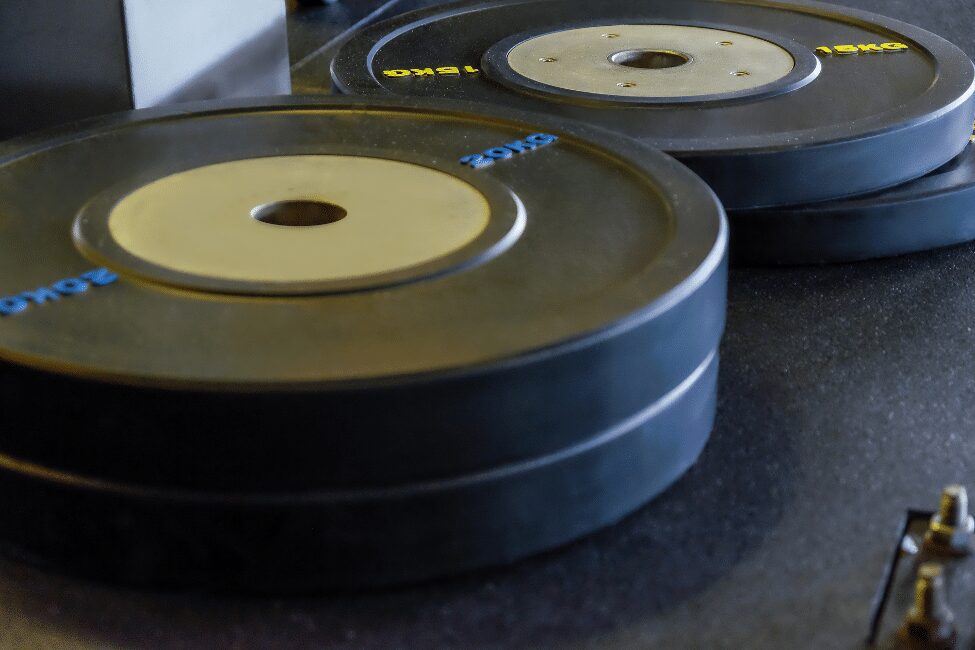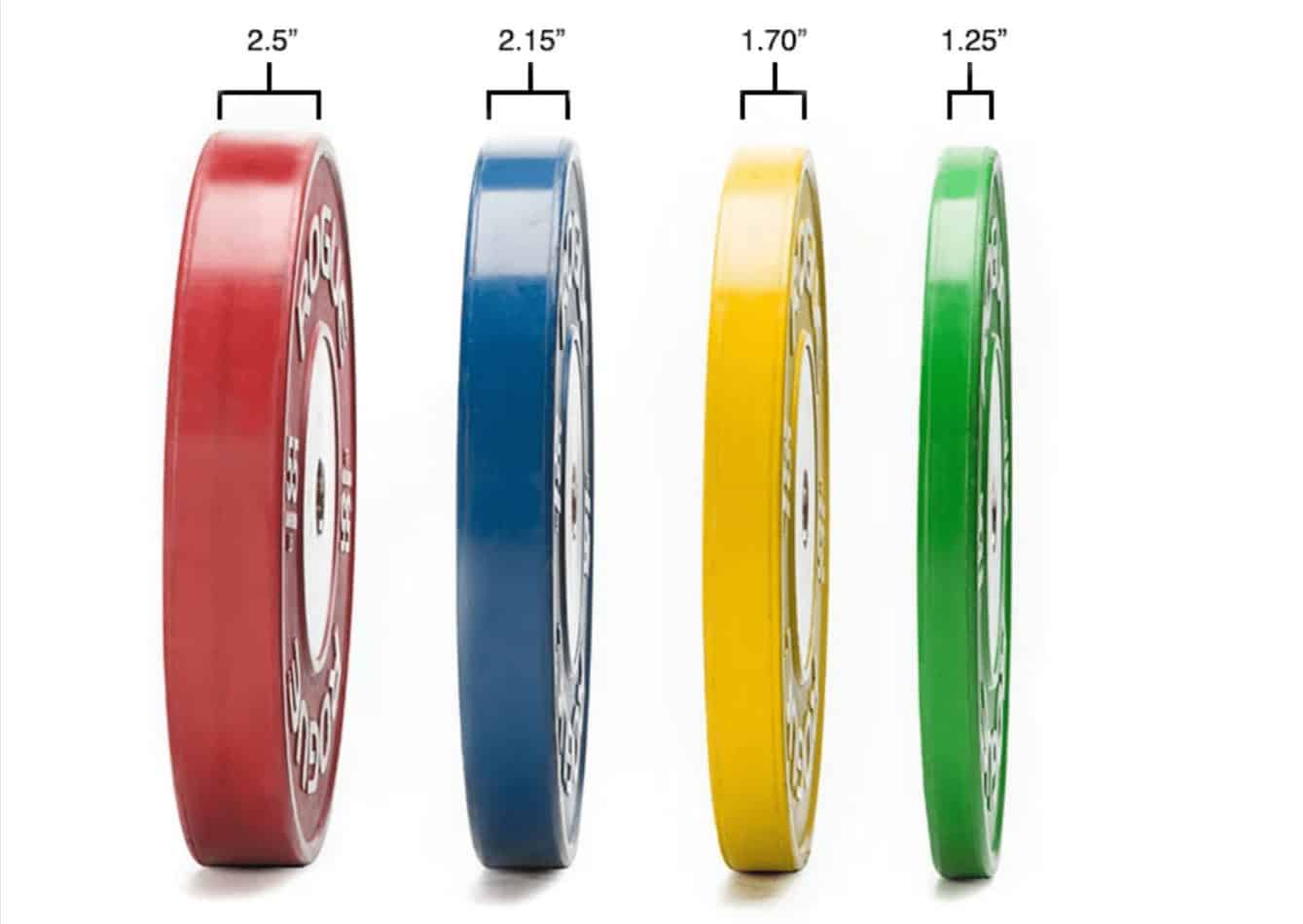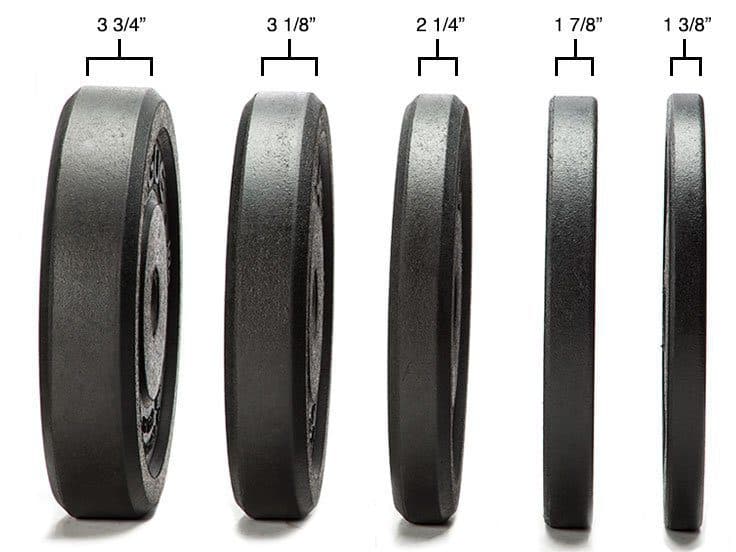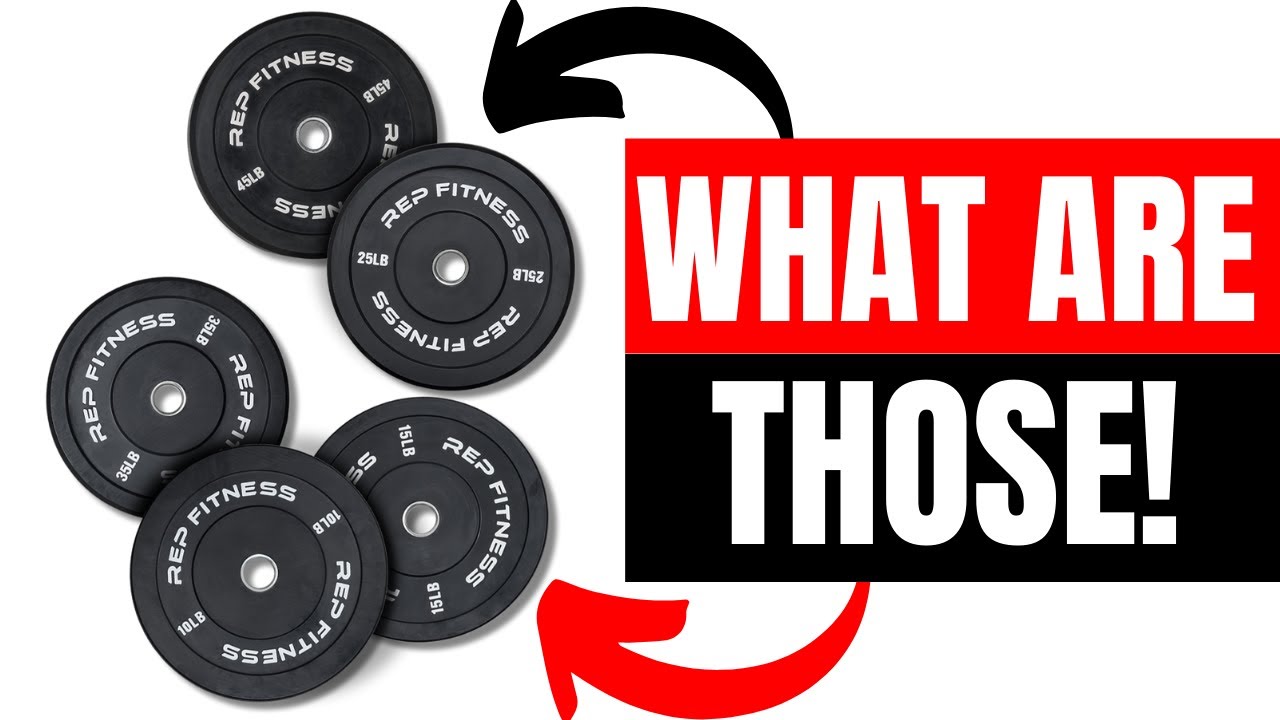Bumper plates are one of the best investments you can get for your home gym.
They allow you to deadlift, Power Clean, and a lot more!
But what exactly are bumper plates, and what is the point of them exactly?
Bumper plates, also commonly called “bumpers”, are special weight plates constructed of a steel/iron core wrapped in a dense rubber coat.
They are built to bounce and prevent damage to your floor, your barbell, and of course, your weight plates.
The main reason for using them is pretty simple: they allow you to drop the weight without destroying your weight plates or your home gym lifting space.
Whatever you’re more worried about breaking, I guess.
However, in this guide, I go over the pros and cons of bumper plates, bumpers vs iron plates, and more!
Let’s get started!
You can also check out my guide on the best bumper plates for your home gym to learn more.
On This Page
- Pros & Cons Of Bumper Plates
- Bumper Plates Vs Olympic Plates
- Are You Going To Do Olympic Weightlifting?
- Frequently Asked Questions
- Are Bumper Plates Lighter?
- Do I really need bumper plates?
- What is bad about bumper plates?
- Can you use bumper plates for the bench press?
- Why do people like bumper plates?
- Why does everyone hate bumper plates?
- Are metal plates cheaper than bumper plates?
- Are competition bumper plates worth it?
- Are bumper plates more expensive?
- Why should you use bumper plates?
- Conclusion
Pros & Cons Of Bumper Plates
Bumpers have a bunch of positives and negatives, just like any home gym equipment.
Just like anything I recommend, you need to determine whether the pros outweigh the cons for your own home gym.

If you only do some Powerlifting/Bodybuilding training and have no need for competition bumper plates, they’re probably not a good idea for you!
That being said, let’s go over the pros and cons now!
Pros
Quieter
Rubber bumper plates are going to be a lot quieter than standard weight plates.
They absorb impact when you drop them, so they will not sound like an explosion like steel plates. They will not clang or bang either.
So if you want to be as quiet as possible, bumpers work well.
Less Damage To Your Barbell & Home Gym Platform
Since they absorb the impact, less of that impact is going to affect your barbell collars. Sure, no solid barbell should have any issues anyway, but if you plan on doing the Olympic lifts, bumpers are a must. Plus, using bumpers will prevent damage to your platform as well.
More Durable Than Steel Plates
This is a solid reason to go with bumpers if you can afford them. They absorb force much better than standard steel plates.
Plus, because of what they’re constructed of, they have to be more durable to handle the abuse thrown at them.
Minimal Bounce For Better Quality Bumpers
The better the quality of your weight plates, the less they’re going to bounce overall.
You definitely want this as sometimes one side bounces higher than the other and can smack you in your shins. I’m talking from experience here, trust me!
No Need To Worry About Rust
Rust is definitely an issue with iron weight plates. With bumpers, they aren’t completely constructed of iron, so they aren’t really going to rust much at all.
If you go with training plates instead of urethane bumpers, they absolutely won’t rust as they only have a steel insert instead of a core!
Cons
More Expensive
Obviously, with all the cool features that rubber bumper plates have, there’s gotta be a catch; that catch is the price.
Sure, if you buy cheaper rubber plates, they’re going to be priced similarly to steel plates. But you’re going to have a ton of other issues with them, as you’ll soon find out!
If you don’t want those issues, you’ll need competition bumpers, which are more expensive. Simple as that.
They Smell Like Rubber (Duh)
A rubber bumper plate is going to smell like rubber. Go figure.
Sure, this will go away eventually, and I’m sure there are things you can use to make this smell go away, but some people get severe headaches from this. Just something to consider if that’s you!
Cheaper Bumpers Are Harder To Load Because Of Their Width
I’m sure you’ve seen tons of pictures and videos of people lifting massive weights that make it look like the person is lifting a ton of weight, right? But then, in reality, it’s like 225 on Deadlift.
This is still an impressive lift for many people, but it looks like a lot more with those wider bumpers.
If all you have are those types of weight plates, it’s going to be difficult to lift heavier weights when you literally can’t add any more plates to the barbell. I’m just saying!
Too Much Bounce With Lower Quality Bumpers
Again, this is more of a problem with cheaper bumpers rather than all of them.
However, some of them have a ton of bounce and will destroy your shins if you’re not expecting the massive rebound they have.
Something to be aware of if you get cheaper plates is that they will try to kill you.
Once Again, Cheaper Plates Have Lower Durability
I’m talking from experience once again, but the first bumpers I got were the cheap recycled rubber bumper plates from sports authority. No joke, these crumbled and started cracking from a single training session.
Just save yourself the headache and invest in some higher quality/more durable plates using virgin rubber. It’s going to be a much better idea and even save some money!
Bumper Plates Vs Olympic Plates
There’s a variety of differences between bumper and Olympic plates.
The biggest ones are the feel, durability, the sound they make, and even how they smell.
Overall, though, depending on which type of weight plate you decide to get comes down to three major factors.
Price, if you plan on doing Olympic Weightlifting, and of course the diameter/width.
PRICE
The price is easy to figure out, if you have a massive budget and don’t need to worry about money, just get the highest quality bumpers you can and call it a day.
They’re going to last longer, don’t require any maintenance, and you can throw them around with no worries.
Plus, if you train early in the morning and don’t want to wake up your family or neighbors, bumpers are much quieter than cast iron weight plates.
On the flip side, if you have a much smaller budget and want to maximize the investment you’re making, just get steel plates.
They’re a great deal cheaper and are still very durable as long as you’re not throwing them from overhead positions.
I crunched the numbers of Rogue, Rep, Titan, and various other home gym equipment manufacturers for their average cost per lb for their bumpers as well as their standard weight plates.
What I found is that on average, training plates are only around 3.34% more expensive while competition bumpers are around 27.1% more expensive!
That’s definitely a huge difference, so I really recommend you just get the training bumpers if you must.
Plus, if you don’t plan on doing any Olympic lifts, they just aren’t necessary anyway!
Are You Going To Do Olympic Weightlifting?
This is something you have to ask yourself if you decide to get some bumpers for your home gym.
If you just want to do powerlifting and bodybuilding movements, you don’t need rubber bumper plates.
Are they nice to have? Sure!
Do they look awesome? Absolutely!
But if you aren’t Olympic Weightlifting regularly and just want to buy more weight overall, cast iron plates are for you.
Diameter & Width
This is another thing you have to consider. Bumpers are a great deal wider, and the diameter is greater than typical steel plates.
The diameter of the bumpers is going to be the same, mostly.
As long as you buy from the same company, every weight plate from 10 lbs up to 55 lbs is going to have the same circumference.
The cool thing about this is that if you’re new to Deadlift or Olympic Weightlifting you can start with 2-10 lb bumpers on the bar from the same height as bigger 45 lb weight plates.
You can check out my best barbells guide here if you're interested in what you should be pairing your bumpers with in your home gym!
This is a tremendous benefit that removes the headache of pulling from blocks or a rack to make sure the starting position with weights under 135 lbs is the same.
Plus, since they’re all the same diameter, they have a wider surface area over the entire collar, which makes dropping them even safer.
As for the width, this is where things get a little difficult.
The heavier the weight is, the thicker it’s going to be, this is especially true for bumpers!
Here are Rogues Lb Competition Plates for your reference.

In comparison, some of Rogue’s Hi-Temp Bumpers are as follows.

As you can see, these are a great deal thicker by a lot!
The biggest reason you need to pay attention to this is that they take up a ton of space on the barbell.
Speaking of, if you're interested in how much a barbell weighs, this post covers all the basic bars and their average weights.
A couple of Rogues’ rubber plates and your bar might already be completely full of plates!
That’s why it’s important to check the specs of the plates you decide to get.
Luckily, we’re going to cover it right now!
Frequently Asked Questions
Conclusion
With that, I turn it over to you!
What do you think of bumper plates after reading this post?
Do you plan on getting some regular training bumpers, or some more expensive competition ones?
Regardless, let me know what you think in the comments section below right now!
Until next time,
-Dante
